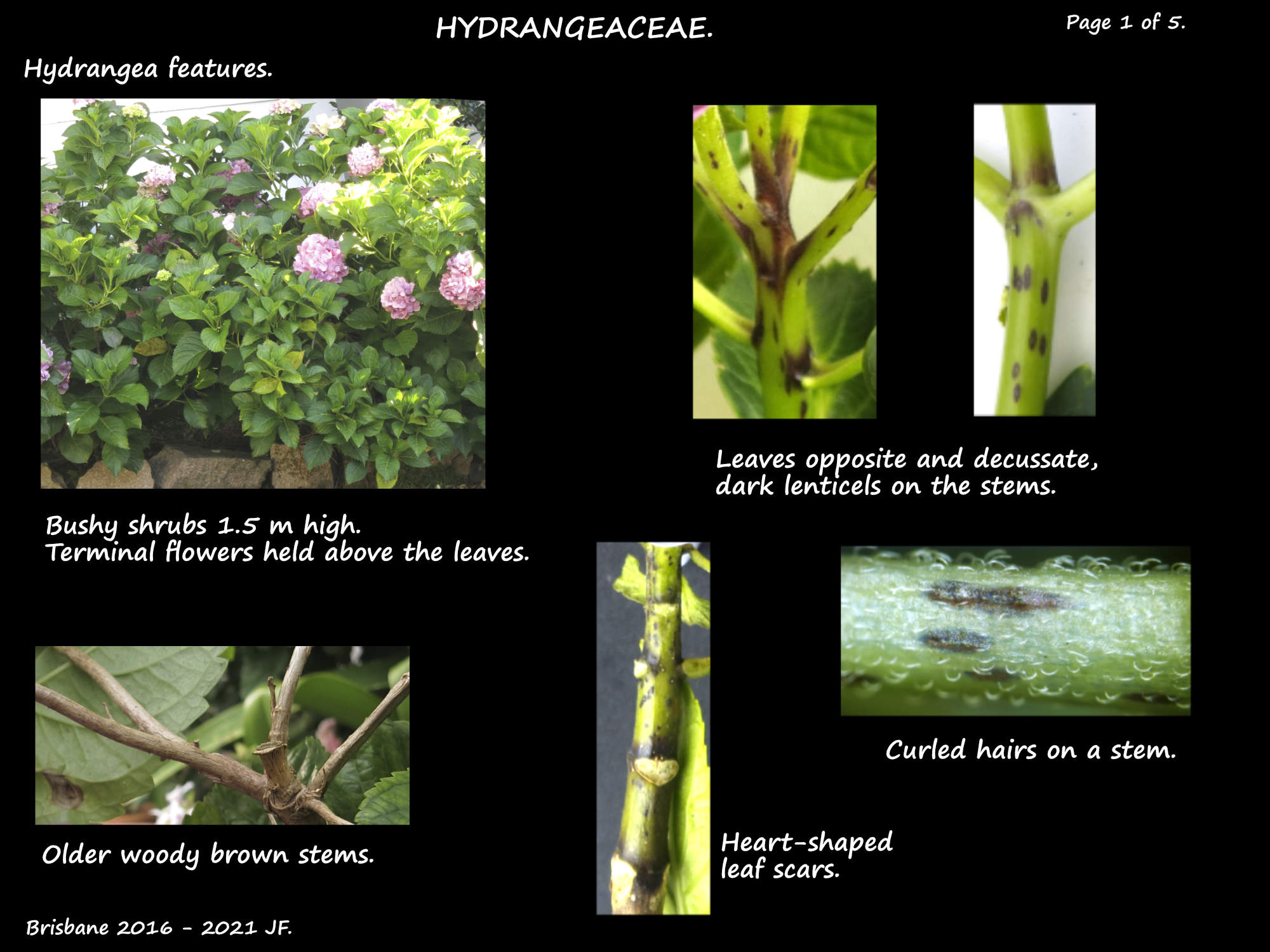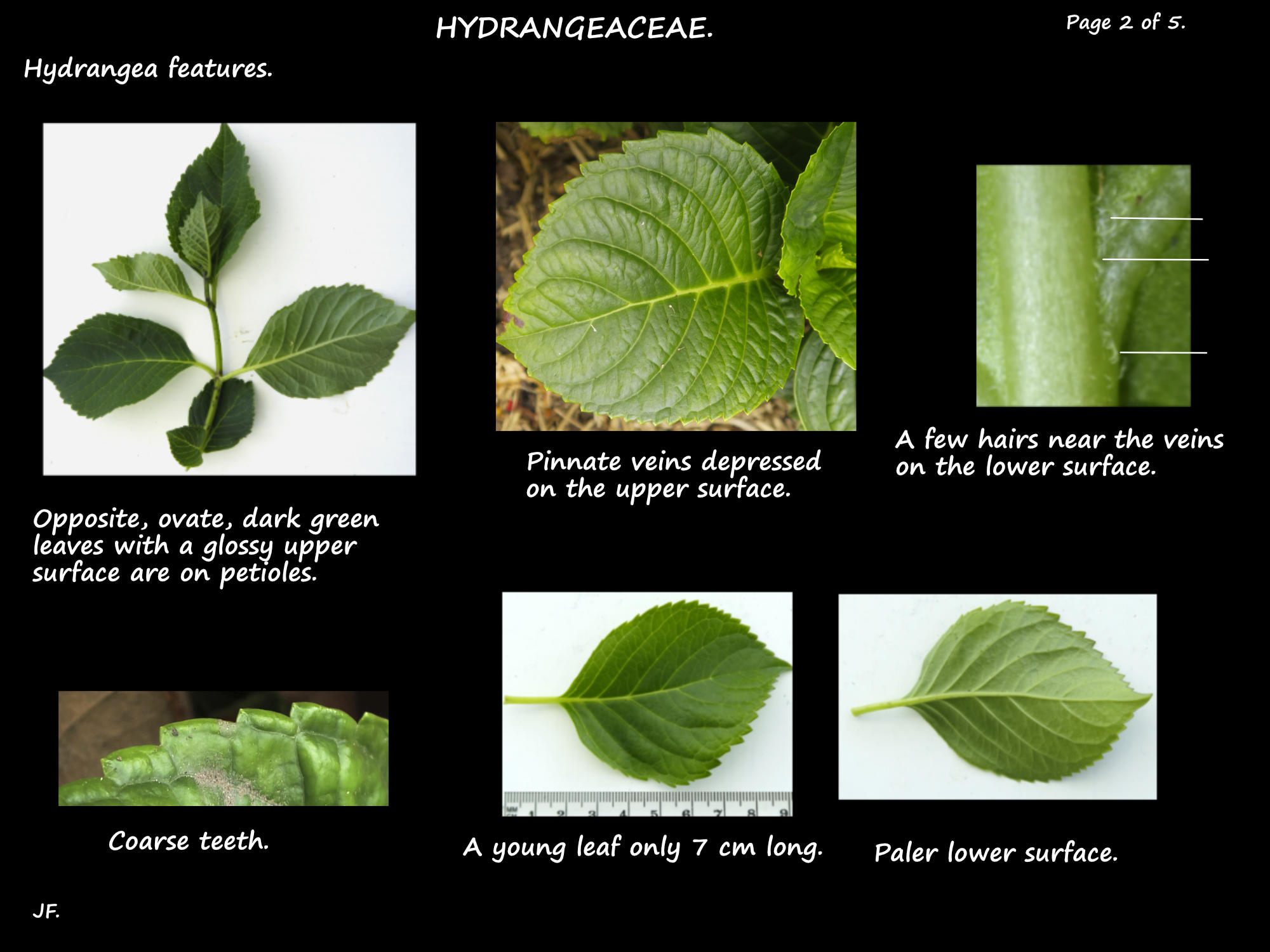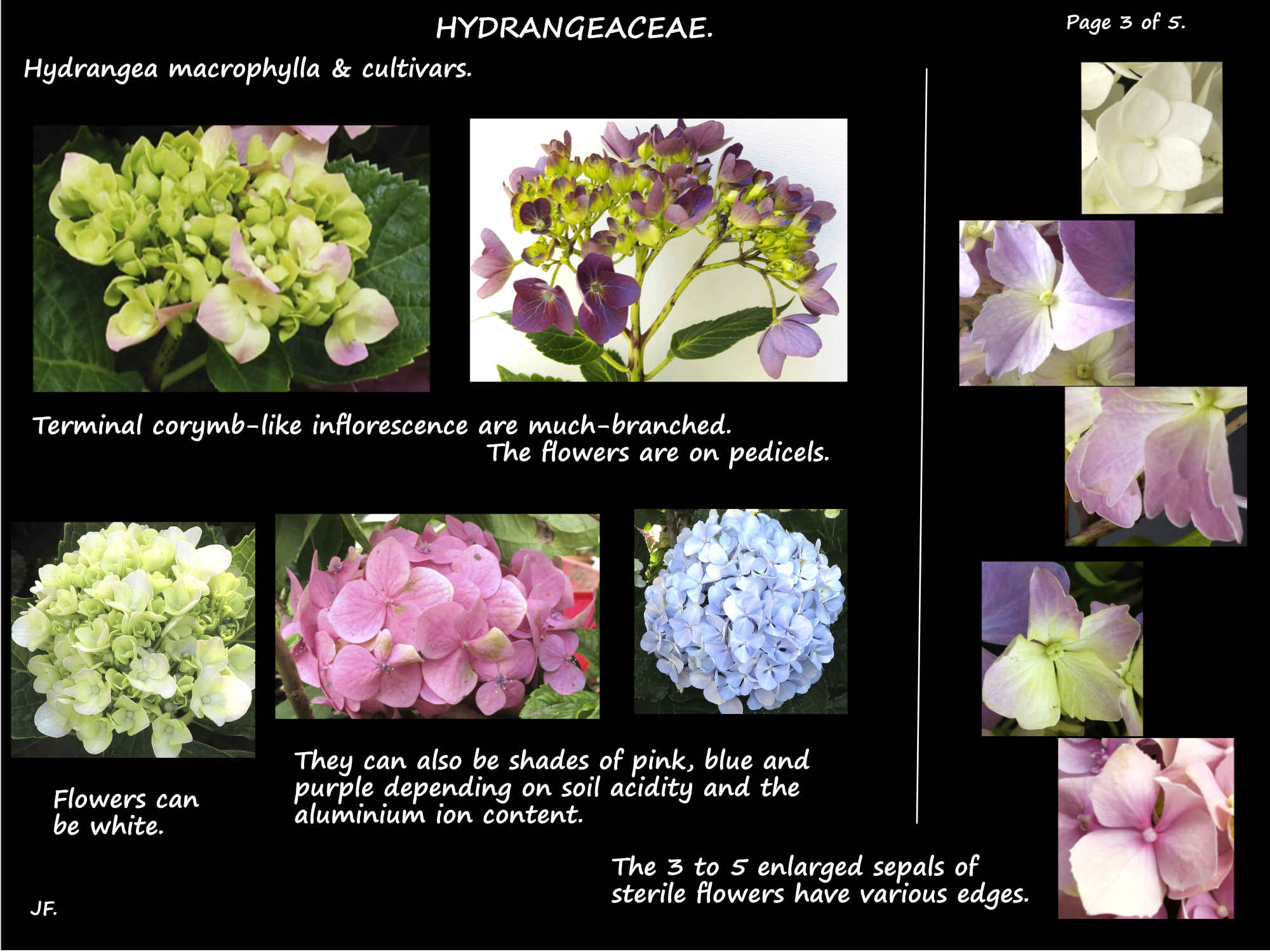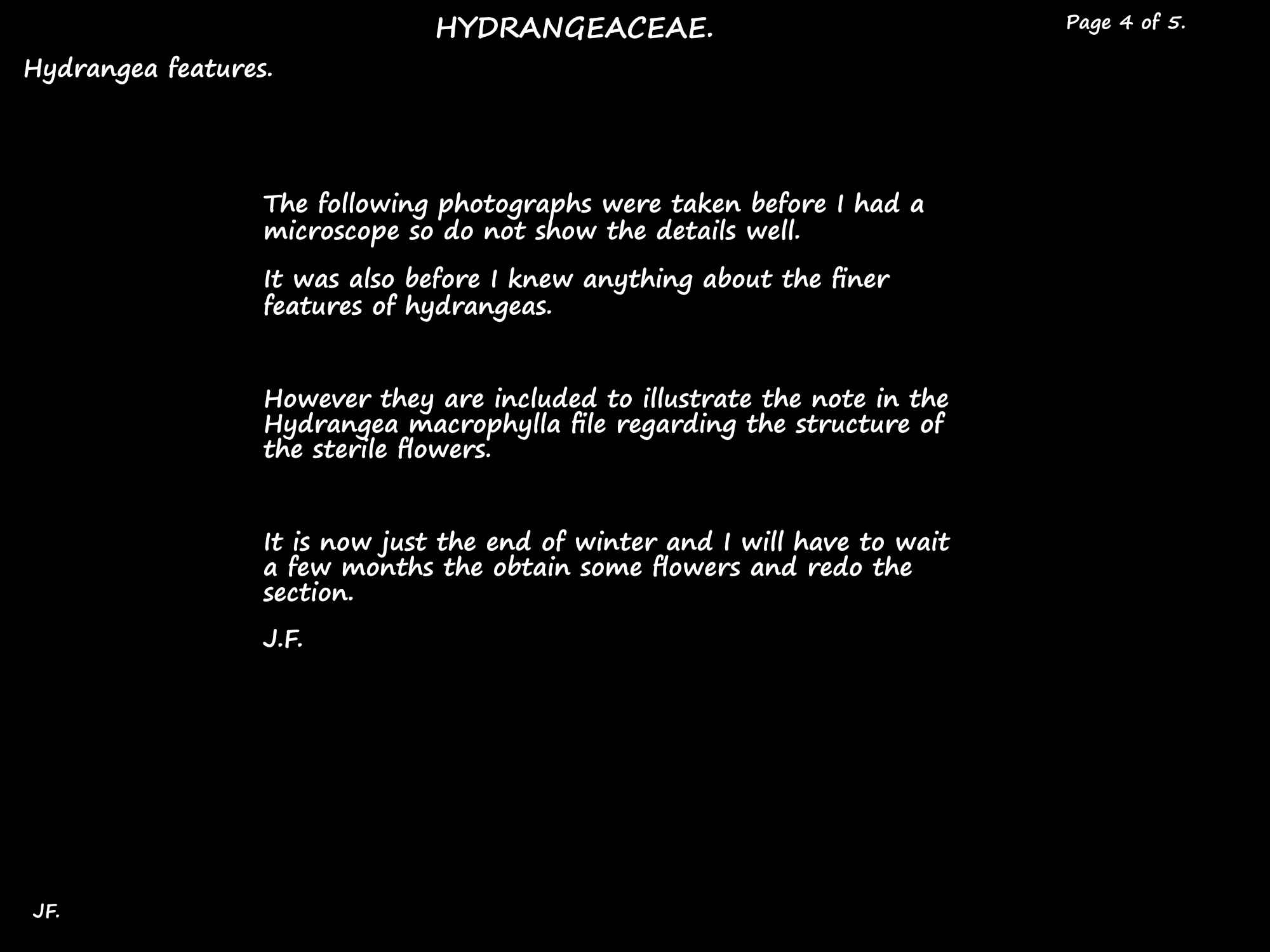Hydrangea.
Family Hydrangeaceae.
There are around 75 (70 to 100) species from Asia and the Americas.
Most are bushy shrubs up to 3 m high with erect or spreading branches.
Others are woody vines that climb up to 30 m using tendrils and there are a few trees.
The bark is brown or reddish to grey and it peels in sheets or strips.
Twigs, leaves and inflorescences may have simple or branched hairs.
In warmer climates they tend to be evergreen and in colder areas they are deciduous.
The leaves are mostly opposite with a few species having whorls of three.
They have petioles and largish blades that can be ovate to elliptic and rarely lobed.
The edges have teeth and there may be hairs.
Most inflorescences are terminal but some are axillary and they have deciduous bracts.
The flowerheads, with various patterns of branching, can have hundreds of flowers.
The flowers are on short stalks (pedicels) that may have hairs.
Inflorescences may be rounded (mophead), have a flat top (lacecap) or be conical.
Typical inflorescences have 2 types of flowers – sterile and fertile or bisexual.
Sterile flowers.
These are at the edge of the inflorescence.
They have 2 to 5 round, ovoid or elliptical sepals whose edges may be serrated.
The sepals are enlarged and petal-like and usually coloured.
They are mostly described as having no stamens or ovary.#
Species plants may have no sterile flowers or only a few while cultivars are bred to have many.
Fertile flowers.
These much smaller flowers are in the centre of the inflorescence.
They have 4 or 5 sepals that persist on the fruit.
The 4 or 5 ovate, oblong, spatulate or elliptic petals are almost always free.
The 10 (8 to 25) free stamens are inserted onto the disc.
The filaments can be linear, have a broad base and be flattened or circular in cross section.
The ovary, of 2 to 4 (5) carpels, varies from inferior to 2/3 superior.
It has a similar range of locules with numerous ovules with a mix of axile and parietal placentation.
There are 2 to 4 (5) styles that are free or joined at the base.
The fruit are typically capsules that open via a pore at the apex of the ovary between the style bases.
There are up to 40 seeds in each locule and they may have wings.
Flower colour.
Most species have flowers that are white.
Hydrangea macrophylla (and its subspecies and cultivars) contain red anthocyanin pigment.
In acidic conditions the anthocyanin changes from pink or red to blue.
A pH of 7 is neutral, under 7 is acidic and above 7 is alkaline.
A roughly neutral pH gives light to dark purple flowers.
Acidic soil produces blue flowers but only if there are aluminium ions present.
Alkaline soil results in pink to red flowers.
The soil pH can be altered by adding chemicals or ground eggshells, tea leaves, coffee grounds or citrus peel.
One plant can have blue and pink flowers at the same time depending on the soil acidity around different areas of the roots.
Flowers with no pigments are pure white and this cannot be altered.
A number of species and hundreds of cultivars are seen in gardens and as cut flowers.
Species available in Australia include:
Hydrangea paniculata has white, cone-shaped flower heads up to 25 cm long with a mix of sterile and fertile flowers.
They are deciduous shrubs up to 7 m high with leaves opposite or in whorls of three.
Hydrangea quercifolia known as the Oakleaf Hydrangea is a shrub up to 2 m high with opposite, 5-lobed
leaves on long petioles. The pyramidal inflorescences, up to 25 cm long, have mostly white fertile
flowers with one sterile flower at the end of each inflorescence branch.
Hydrangea arborescens. Smooth Hydrangeas are shrubs up to 3 m high with opposite, heart-shaped, ovate or
elliptic leaves that are up to 20 cm long on petioles up to 7 cm. The flattish or hemispheric inflorescences
are up to 12 cm across with mostly small, fertile flowers. Sterile flowers may be present or absent.
Hydrangea petiolaris. Climbing Hydrangeas are vines with stems up to 10 or 15 m long. The flat-topped inflorescences,
up to 25 cm across, have a few sterile white flowers around the small (1 – 2 mm wide) pale cream fertile ones.
Hydrangea macrophylla is dealt with separately.
# See note under H. macrophylla.
J.F.






